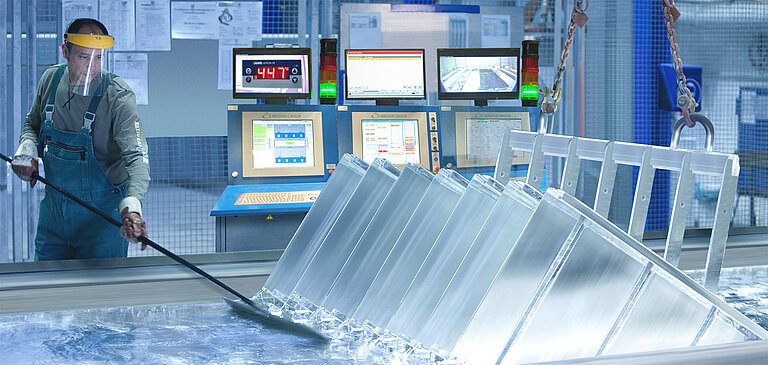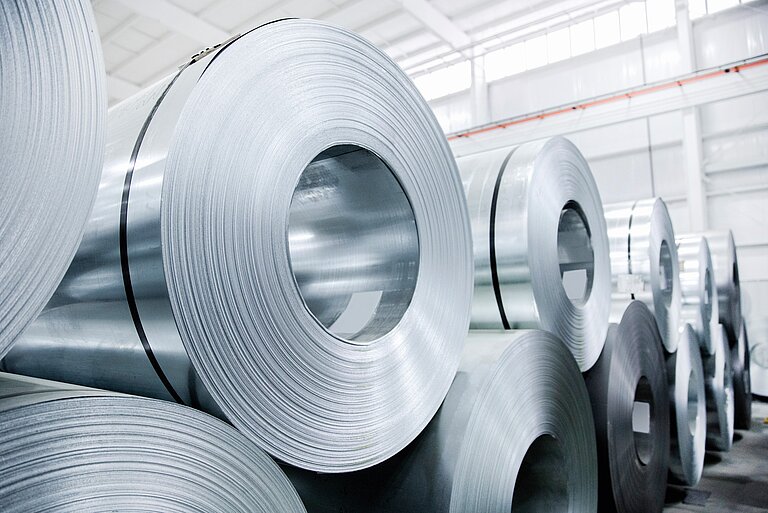Electrogalvanizing in accordance with DIN EN ISO 2081 / DIN EN ISO 19598
Electrogalvanizing is an electrolytic coating process. It increases corrosion and wear protection and improves electrical conductivity. Metals are given a certain shine and a high-quality appearance.
In this process, the zinc coating is applied in aqueous electrolytes using direct current. The resulting zinc coatings are thinner than with hot-dip galvanizing. They are usually around 5 µm. Thicknesses of 2.5 to 20 µm are possible. Electrogalvanising is therefore mainly used for temporary corrosion protection tasks in slightly corrosive environments. This process is used for components of almost all sizes. It offers technical corrosion protection through to decorative "finishing" and is used for dry interiors.
Components with undercuts, such as C-shaped anchor channels, are coated to a lesser extent on the inside than on the outside (Faraday cage).
Standards and requirements
DIN EN ISO 2081 specifies the requirements for electroplated zinc coatings on ferrous materials with additional treatment. It does not apply to zinc coatings on sheet, strip or wire in unprocessed form, on narrow-spiral springs or for purposes other than corrosion protection or decoration.
DIN EN ISO 4042 is used for mechanical fasteners. The standard mainly applies to fasteners with zinc and zinc alloy coating systems (zinc, zinc-nickel, zinc-iron) and cadmium, which are primarily intended for corrosion protection and other functional properties.
DIN EN ISO 19598 is the international standard for galvanically deposited, freely passivated zinc coatings on ferrous materials. This standard uses defined test methods to determine how resistant a material must be to corrosion. It also specifies the minimum coating thickness required for this.
Corrosion protection
Galvanized surfaces are given corrosion resistance by passivation after galvanising. In the case of electrogalvanizing, the corrosion protection period is determined by a salt spray test in accordance with DIN EN ISO 9227 NSS. Depending on the coating thickness and passivation type, the corrosion protection in the salt spray chamber is up to 1008 hours. Reworking on site as a result of damage to the surfaces during transportation, storage and installation is not possible. There is no "self-healing effect" with electrogalvanising as there is with strip galvanising; cut edges remain bare.







